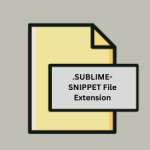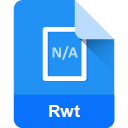.TDS File Extension

Adobe LiveCyle Designer Template
| Developer | Adobe |
| Popularity | |
| Category | Page Layout Files |
| Format | .TDS |
| Cross Platform | Update Soon |
What is an TDS file?
The .TDS file extension stands as a hallmark of Adobe LiveCycle Designer Templates, serving as the canvas upon which intricate forms and documents are crafted.
As the cornerstone of Adobe’s enterprise-level form design and document automation solution, these templates empower users to create dynamic, data-driven forms for a myriad of purposes.
More Information.
The inception of Adobe LiveCycle Designer marked a pivotal moment in the realm of digital document management.
With its intuitive interface and powerful feature set, LiveCycle Designer revolutionized the creation of electronic forms, enabling organizations to transition from static, paper-based forms to dynamic, interactive digital counterparts.
The .TDS file extension emerged as the proprietary file format for LiveCycle Designer templates, encapsulating the layout, styling, and logic of form designs.
Origin Of This File.
The genesis of the .TDS file extension can be traced back to Adobe LiveCycle Designer, an integral component of the Adobe LiveCycle suite.
Initially introduced in the early 2000s, LiveCycle Designer emerged as a robust platform for designing and managing dynamic electronic forms, catering to the evolving needs of enterprises in streamlining document workflows and enhancing user interactions.
File Structure Technical Specification.
.TDS file extension embodies a structured XML-based format, encapsulating the hierarchical structure and properties of form elements, data bindings, and scripting logic.
This XML schema adheres to the specifications defined by Adobe for LiveCycle Designer templates, facilitating seamless interchangeability and interoperability across various Adobe products and platforms.
Within the .TDS file, elements such as form objects, data fields, scripting snippets, and layout configurations are meticulously organized and annotated, enabling precise rendering and behavior when instantiated within Adobe LiveCycle forms.
The extensibility of the XML schema allows for customizations and enhancements tailored to specific business requirements, ensuring flexibility and adaptability in form design.
How to Convert the File?
Converting .TDS files to alternative formats can be accomplished through various methods, including:
- Export to PDF: Adobe LiveCycle Designer provides built-in functionality to export .TDS templates to PDF format, ensuring compatibility and accessibility across different viewing platforms.
- Data Extraction Tools: Third-party data extraction tools and services offer capabilities to extract form data from .TDS files and convert them to standardized formats such as CSV or XML, facilitating integration with external systems and workflows.
- Manual Conversion: In cases where automated conversion methods are not feasible, manual recreation of form designs using alternative tools or platforms may be necessary, albeit time-consuming.
Advantages And Disadvantages.
One of the primary advantages of .TDS files are their compatibility with Adobe LiveCycle Designer, enabling seamless integration into existing document workflows.
Designers appreciate the flexibility offered by LiveCycle Designer in creating complex forms with interactive features and dynamic content.
A potential disadvantage of .TDS files lie in their proprietary nature, as they are designed specifically for use within the LiveCycle ecosystem.
This can pose challenges for users who need to share or collaborate on form templates with individuals or systems that do not have access to LiveCycle Designer.
How to Open TDS?
Open In Windows
- Adobe LiveCycle Designer: The primary software for working with .TDS files is Adobe LiveCycle Designer, which is compatible with Windows operating systems. Install LiveCycle Designer on your Windows PC, and then simply double-click the .TDS file to open it within the application.
Open In Linux
- Wine: Linux users can try using Wine, a compatibility layer that enables running Windows applications on Linux systems. Install Wine on your Linux distribution, and then install Adobe LiveCycle Designer through Wine. Once installed, you can open .TDS files in LiveCycle Designer as you would on a Windows system.
Open In MAC
- Virtual Machine: macOS users can open .TDS files by running a virtual machine (VM) with a Windows operating system installed. Virtualization software such as VMware Fusion or Parallels Desktop allows you to create a Windows VM on your Mac. Install Adobe LiveCycle Designer within the VM and open .TDS files as needed.
Open In Android
- Third-Party Apps: While there may not be native support for opening .TDS files on Android devices, you can explore third-party file manager apps available on the Google Play Store. Some file manager apps offer support for opening XML files, which .TDS files are based on. However, editing functionality may be limited.
Open In IOS
- Third-Party Apps: Similar to Android, there’s no direct support for opening .TDS files on iOS devices. You can try using third-party file management apps from the App Store that support XML file viewing. These apps may allow you to view the contents of .TDS files, but editing capabilities may be restricted.
Open in Others
- Online Conversion Tools: There are various online conversion tools available that claim to convert .TDS files to other formats. However, exercise caution when using these tools, as they may not always preserve the formatting and functionality of the original .TDS file.
- Adobe Acrobat: If the .TDS file was exported to PDF from Adobe LiveCycle Designer, you can open it in Adobe Acrobat or any PDF viewer on any platform. While this won’t allow editing of the original form elements, it will display the content of the form.













